Dolphinium - beautifully blooming herbaceous plant with a thin high stem, which is littered with a variety of charming flowers, whose petals can be pink, blue, purple or blue shades. The plant belongs to the family of iltike and there are about 400 varieties, which are widespread both in the northern and southern hemisphere of the planet. Among the dolphiniums there are perennial and annual species. Gardeners Dolphinium attracts a bright appearance and large size. Dolphiniums grow rapidly, their abundant bloom begins at the end of June and continues for a month.
Delphinium annual, description
One-year dolphinium is a grassy, \u200b\u200bfast-growing plant, with a height of a stem from 40 cm to 2 meters, on which the flowers of an unusual shape collected in inflorescences are located. What seems to us by petals are actually a cup of diverse colors, there are 5 pieces. Four cups have an oval-extended shape, and the fifth, the upper - long, curved, similar to the spur. For such an interesting structure of the flower, the dolphinium is often called the bias, springs, "Zhavoronkin's legs". The length of the spit can be from 5 mm to 4 cm, nectors are located inside it, which attract their aroma of insects, bumblebees and butterflies. Fathers of certain types of delphinium, which grow in the southern regions of America, are the world's smallest birdhouses in the world. In addition to the nekar, in the center of the flower there are two very small petals that form peepholes, called the Stamondi. Most often they are painted in white, black or gray. Schount inflorescences are different in magnitude and density, they are blown not at the same time, starting from the bottom and gradually reaching the tops. No less decorative in the dolphinium leaves of dissected shape and light-edge, retaining their decorativeness from spring to the autumn itself.
What is the difference between annual views from perennials
Among the annual dolphiniums there are about 40 species. This annuals are considered less capricious in growing than perennials. They differ in appearance, having a similar color gamut palette, aluminum flowers are much smaller, and the height of the plant does not reach more than meters, unlike perennials, which can grow up to 3 meters. The care for annual species of dolphinium does not differ from perennials. An annual dolphinium, which is grown from seeds, blooms before many years of varieties.
Types of annual Dolphiniums
Field - Refers to high grades, its height can reach up to 1.5 meters. Inflorescences are pink, blue, white and lilac shades of different textures of terry or ordinary. Flowering field dolphinium begins in the summer and lasts until September. The plant is considered to be poisonous, used as a diuretic and anti-shine.
Famous varieties:
- FROSTED SKY with spectacular blue flowers with white middle;
- QIS ROSE with gentle pink inflorescences;
- QIS Dark Blue with dark blue inflorescences.
Dolphinium field blooms at the beginning of summer and blooms until autumn.
Dolphinium Ajax - Beautiful decorative low plant, whose height is from 30 cm to meter. Pink-lilac coloring is mainly common, it is less common to meet a view with red and purple inflorescences. Bloom in the year of sowing and continue blooming from July to the onset of frosts. On the basis of Dolphinium Alaska, beautiful and spectacular varieties are derived:
- Race Kelsen is a high grade with elongated inflorescences of dense texture, a pink, lilac, white and purple coloring occurs.
- Koenigs-Rittersport - a grade reaching up to 1 meter, inflorescences can be white, pink, both bright and bright saturated shades, red, blue and blue colors.
- The hyacintonic mixture is compact low plants, their height reaches 50 cm. Flowers with terry flowers, which bloom at the same time along the entire length of the tight infloresception. Dolphinium Annual Hyacinth has many colors. The plant is used to land along the site, fences, to create spectacular group fit in the garden. The grade is grown on the cut and looks great in bouquets. Cut inflorescences for a long time retain their attractiveness and can stand in a vase for up to 10 days.
Dolphinium annual, cultivation of seeds
Annual Dolphinium Types Spank Seeds. It is worth noting that plant seeds can not be stored in the warm room. For planting, only fresh seeds or those were stored under reduced temperature, in the refrigerator. One-year dolphinium from seeds plant early, as seedling develops very slowly, the optimal time of sowing is February. Before planting seeds, it is necessary to prepare and process to improve the germination of young seedlings and protect them from possible diseases. Seedling dolphiniums is very tender and fragile.
How seeds are processed (disinfection)
To handle the seed material, it must be soaked in a solution of manganese, the color of which must be saturated raspberry, but not black. Seed soaking time - 20 minutes. A fluungicide solution can be used as a solution, which is divorced by instructions. In order for the seeds is more convenient to omit into the solution, they should be placed in a tissue bag. After 20 minutes, without removing from the bag, the seeds need to be rinsed under running water. To speed up growth and increase the germination of the sowing material, it is recommended for a day to soak seeds in the solution of the growth biostimulator epine (several drops of 100 ml of water should be added). After the manipulations of the seeds need to be dried and traced then so that they do not stick.
Fortress preparation
To create for seeds a nutrient medium for rapid growth, the soil must prepare in advance and enrich useful substances. In the garden soil in equal proportions, peat, humid and half of the portion of pure washed sand is added. The mixture must be thoroughly mixed, sift and add two of it perlite (0.5 glasses per 5 liter of soil). For the destruction of pests, the dispute of mushrooms, the seeds of weeds soil should be disinfected by heating it in a water bath for one hour. Now the soil is ready for the landing of the dolphinium, it should be filled with containers and slightly compact the surface.
Sowing Dolphinium Seeds
Seeds are distributed over the surface of the soil in the container and are superseded with a small layer of soil, approximately 3 mm. Seeds need to press a little so that they do not rose on the surface of the earth during watering. After sowing, the seeds need to be poured by spraying with cool boiled water. Planted seeds are covered with film and put in a dark cool place with a room temperature not more than 15 degrees.
The peculiarity of the cultivation of the Dolphinium seeds is that for successful germination they need a darkness and requires stratification, that is, hardening. To darken the crops, you can use a black tight film and make containers on the balcony, where the air temperature does not fall below 5 degrees of frost or refrigerator. The stratification procedure is carried out within 14 days, then the container is returned to the windowsill. A week later, the first seedlings should appear, as soon as they appear, the film must be removed and periodically spray them, not allowing soil drying. The first sheets appear on strong squat sprouts appear first leaflets, the seedlings need to be sipped into cups or individual containers, carefully water and observe about 20 degrees. Dolphinium does not tolerate the oversight of moisture, since the plant is prone to the disease "black leg", which can destroy shoots.
Survey care
When shoots are growing up, in early May, they can be made beyond the limits of the room or leave on the open window sill, passing to the new temperature. During this period, seedlings needed with mineral fertilizers, a solution of "agric" or "solution" is used (1-2 times before landing in open ground. It should be accurately to make fertilizer so that they do not burn the gentle leaves of the plant. When the roots fully turn the tank with the ground. The seedlings are ready for landing in the ground, the earthen comes with the root is easily removed from the container.
Dolphinium Annual, landing in the ground
- When the soil warms up enough, you can plant seedlings into the ground, choosing a sunny, ventilated place for it. It is worthwhile to avoid places where there are drafts, a dolphinium fragile plant and can break from the impulse of a strong wind.
- The landing pit for planting a young plant should be quite large, 0.5 buckets of humidiation are added to it, several spoons of mineral fertilizer and ash.
- Components need to mix well, the mixture should not get on the plant.
- Seedlings are planting in the landing pit, well sealing land, the plant needs to be well.
- For a seedling, you need to create a certain microclimate so that it takes place well. For this use half of the circumcised plastic transparent bottle. Such a design will also protect the young plant from the invasion of the slugs that Dolphinium seedlings adore.
- Periodically, a bottle should be raised to control the plant and eliminate excessive humidity, which can cause shooting of escape.
- After the shoots are growing, they need a garter.
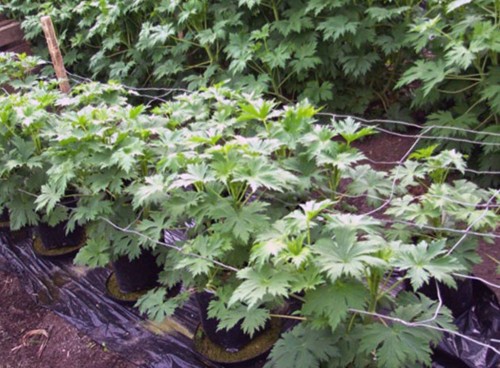
Autumn planting annual dolphinium
Unlike perennials, one year spout can be sown in the fall immediately into open ground. During the winter period, the seeds will be stratification in vivo. In the spring, when the first mass gears appear, it is necessary to break them and leave the strongest sprouts, at the rate of not more than 10 bushs per square meter.
Dolphinium care
In order for the flowers of the dolphinium annual admire the lush abundant blossom, the plant requires special care.
Watering
Dolphinium prefers moderate watering, without overswearing the soil, which can be destructive for him. The plant must be watered under the root, especially in the arid period. Every week it is necessary to pour 2-3 buckets of water under the bush. After dried, the soil needs loosen.
Podchar
The most important and responsible stage in the caring for flower. Total produce three feeders. The first feeding is carried out when the young plant reaches a height of 15 cm, the second - during the bootonization, and the third - when the flowering is completed. As feeding uses complex mineral fertilizers, containing potassium chloride, saltper, superphosphates that need to be distributed under a bush, blocking a little into the soil. For rapid growth of the plant, it is possible to feed the organic fertilizer at the calculation of the bucket of manure to 10 buckets of water.
Trimming and gap
To get beautiful and large inflorescences, the plant needs pruning and thinning a bush. It is produced when the dolphinium stems grow up on a height of 20-30 cm, weak stems are removed, 3-5 of the strongest and strong stems should remain on the bush, which will give large inflorescences. Inflorescences and buds that beat away should be deleted.
When the height stem is reached up to 50 cm, the plant must be tiered so that with strong wind they are not damaged. As a support, rakes, rods, pegs, to which tissue strips are attached, the next garter is made when the plant grows up to 1 meter.
Dalphinium diseases and pests
Dolphinium is subject to many diseases that can be divided into 4 categories:
Fungal diseases:
- puffy Rosa-disease, which looks like white bloom on the leaves. Over time, the flare purchases the brown shade and leaf fades;
- range neck rot - With the damage to the plant, this fungal disease is the yellowing of the leaves, flowers, on the root neck you can notice rot. During the not taken measures lead to the death of the ground part of the plant. When the disease is first discovered, the stems and leaves of the foundazole or the preparation "Topaz" should be treated.
Dolphinium bacterial diseases:
- bacterial wilt - with the disease, the bottom leaves of the plant begin to yellow, the root neck becomes soft and acquires a brownish shade, with time the stains grow;
- black spottedness of leaves - black spots appear on the leaves of the plant, which gradually cover the entire surface, moving to the stem. To combat the disease, spraying with a tetracycline solution (1 tablet per 1 liter of water), the struggle is effective only at the initial stage.
Viral diseases also affect the dolphinium:
- astrovy jaundice - the yellowing of the leaves is observed, the growth of the plant slows down;
- ring spot and mosaic - a viral disease that cannot be treated, the struck a bush needs to be removed. It looks like a pattern in the form of a ring on the leaves, which over time increase in diameter. The struggle with the carrier of the virus - towls is necessary, the prophylaxis requires a spraying of the dolphinium carbofos or accutelic.
Dolphinium pests:
- dolphinium flies - pest, laying eggs into buds damages the plant. Fly larvae devour buds and flowers do not give seeds. Insecticides are used to destroy flies and larvae;
- slug - feed on young shoots, they can scare the chlorine lime, the smell of which they do not endure. It is enough to arrange jars with a chlorine between the bushes.
What difficulties may arise when growing a dolphinium
- In the wrong place for landing, the plant will not fully develop and grow. The plant needs sunlight in the first half of the day, the site should be well ventilated and at the same time is protected from wind gusts.
- Excessive moisture, insufficient drainage in the ground can lead to reinforcement of the root. It is not recommended to plant plants in the proximity of groundwater.
- Drought is extremely undesirable for the plant, the dolphinium needs regular irrigation.
- With a late garter of bushes to the support, the stalks of the plant break under their weight and from the busting of the wind.
- Preventive measures taken to combat disease and pests will protect the plant from many problems.
- The dolphinium needs regular soil mulch, so that his roots are not taken away and did not swam.
Dolphinium in landscape design
Dolphinium is a wonderful flower for cutting. Due to its beauty, the ability to stop fresh for a long time, it is often used to compile bouquets and flower compositions. Dolphinium looks harmoniously as a bouquet in a high narrow vase that emphasizes his elegance and refinement.
On the garden areas, dolphiniums can be seen by the planted groups, so the flower looks much more attractive and brighter, especially when a variety of inferences are used for landing. In the background, tall varieties are planted, and ahead of the composition is low. Landscape designers use plant for background in mixlers. The dolphinium is perfect about the bushes of roses, luxurious dahlias, delicate lilies and amazing floccals. Often delphiniums can be seen along the fences, fences, the facade of the house.
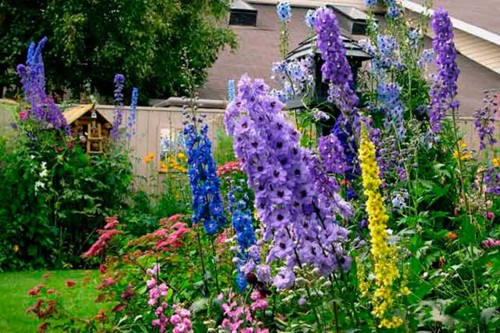
This annual dolphinium is a very beautiful plant for garden decoration, flower beds and cottages. His long stems with colorful dense inflorescences will not leave anyone indifferent. Despite the time-consuming process of growing plants from seeds and some difficulties in care, the dolphinium occupies a worthy place in modern sites and in the gardens, it loves and grow many gardeners and dacities. Observing all the rules for planting and leaving the plant, in a short time you will admire the result of your efforts and enjoy it incredible beauty.


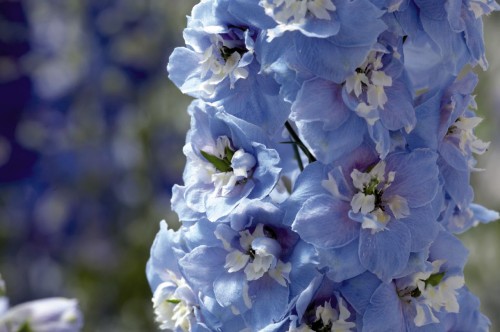
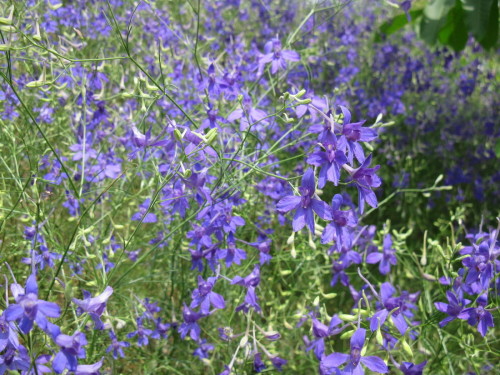
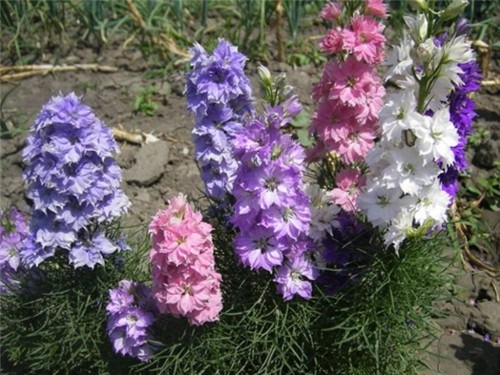
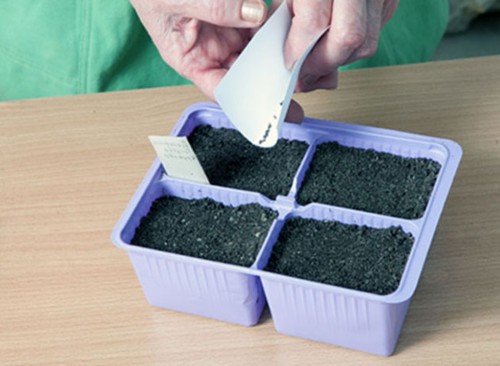
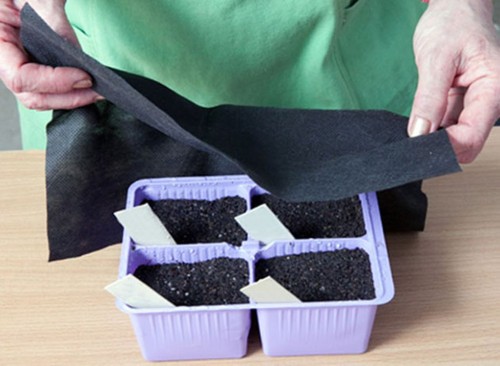
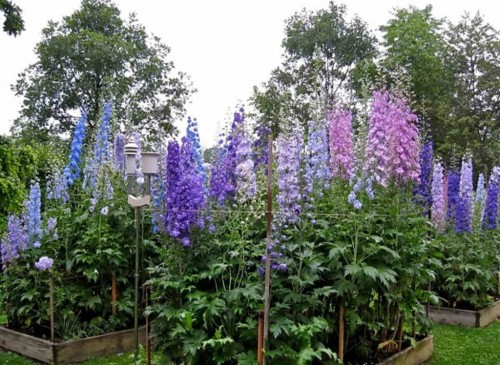
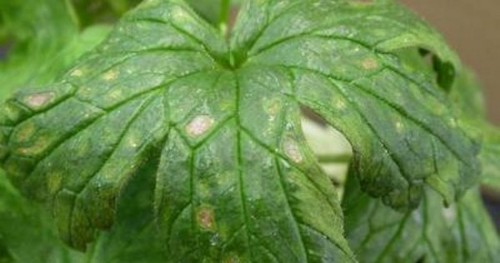
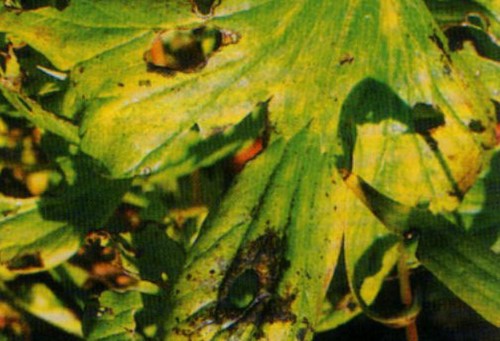
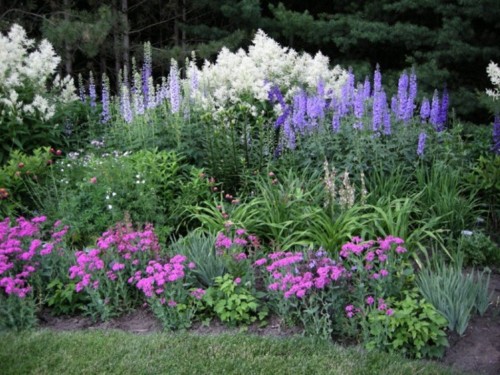
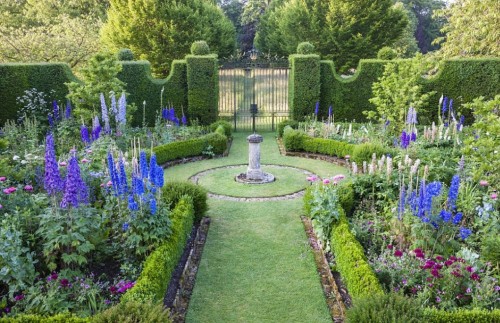
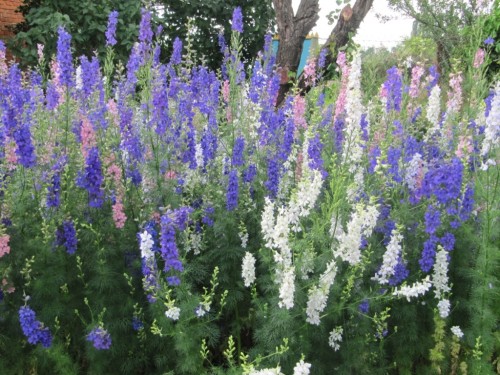
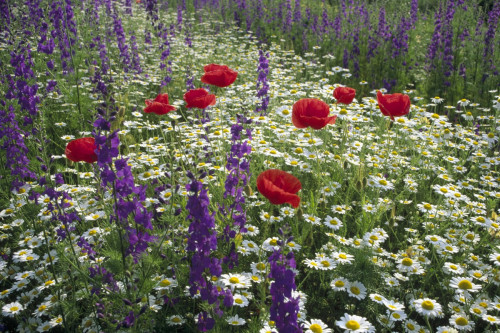
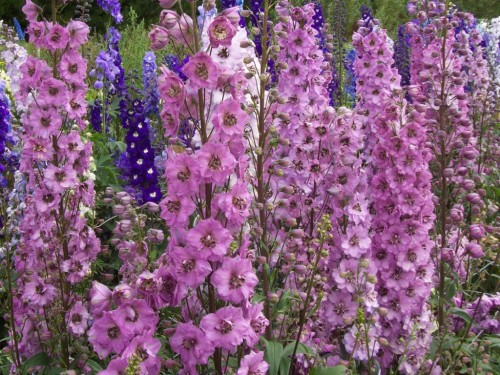
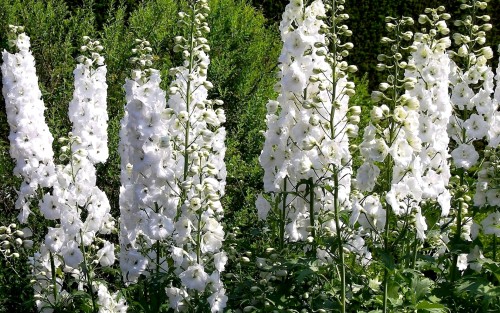
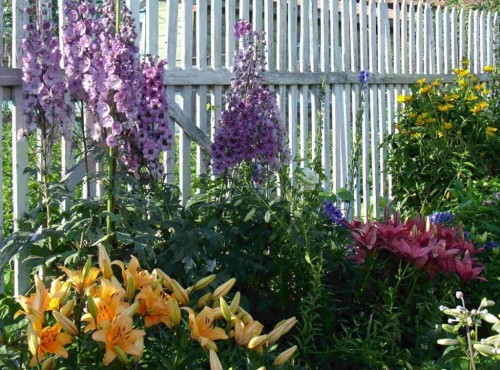












 Start a discussion ...
Start a discussion ...